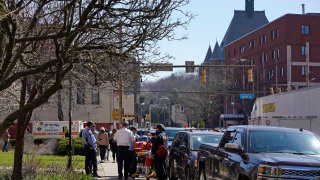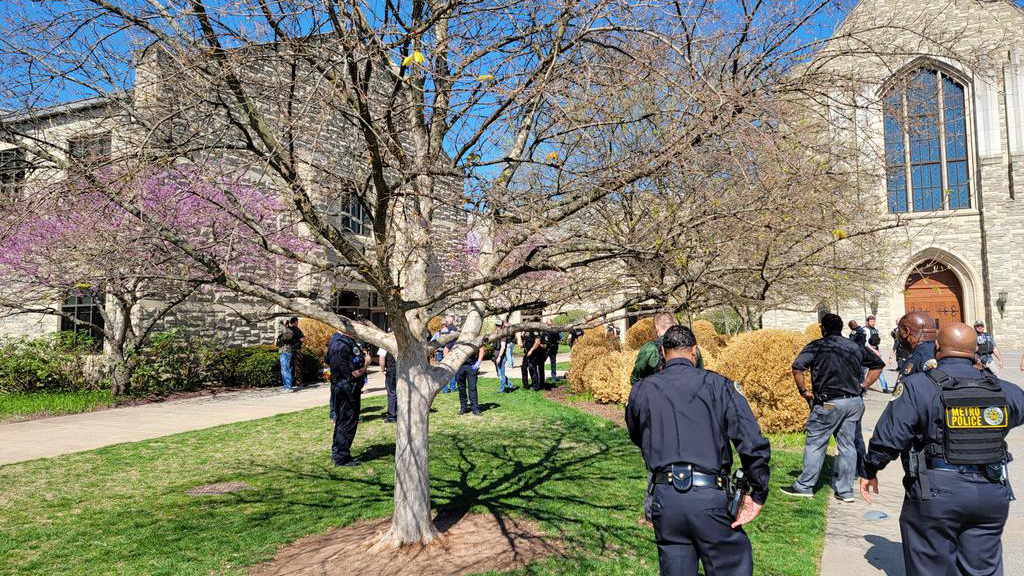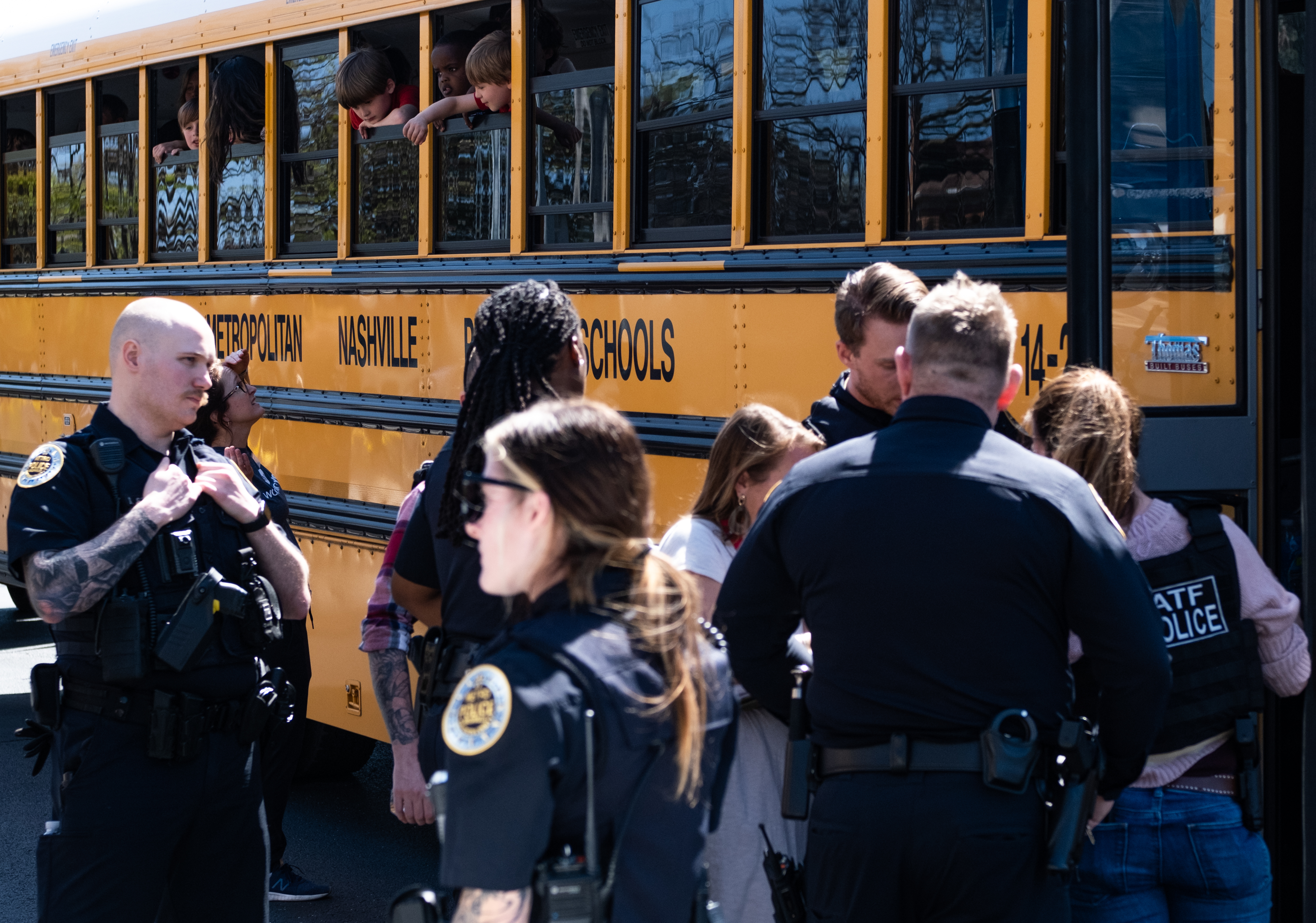
Pittsburgh Police and paramedics respond to Pittsburgh Central Catholic High School for what turned out to be a hoax report of an active shooter, on Wednesday, March 29, 2023 in the Oakland neighborhood of Pittsburgh.
A spate of threats and false reports of shooters have been pouring into schools and colleges across the country for months, raising concerns among law enforcement and elected leaders.
Schools in Pennsylvania were the latest targeted by so-called swatting. Computer-generated calls on Wednesday made claims about active shooters, but it was all a hoax. One day earlier, nearly 30 Massachusetts schools received fake threats.
School officials are already on edge amid a backdrop of deadly school shootings, the latest Monday at a Christian school in Nashville.
Here is a look at the issues involved:
WHAT IS SWATTING?
Hundreds of cases of swatting occur annually, with some using caller ID spoofing to disguise their number. The goal is to get authorities, particularly a SWAT team, to respond to an address.
An FBI official said in November that they believe the wave of false threats focused on schools may be coming from outside of the country.
Officials said at the time that they had identified calls to about 250 colleges, 100 high schools and several junior high schools just since early June falsely reporting explosive devices being planted at the schools or saying that a shooting was imminent.
The FBI didn’t immediately respond to emails Wednesday from The Associated Press seeking comment, but the threats have continued to accumulate in recent months.
WHERE ARE SWATTING CALLS HAPPENING?
Few regions of the country have been spared from such calls and the disruptions they cause.
The false calls Wednesday in Pennsylvania led to lockdowns or evacuations in several counties, according to state police. Law enforcement had to take each one seriously no matter how dubious it seemed.
Police in Pittsburgh, for instance, searched every room at Central Catholic High School, even after getting word that a report of people being hurt inside wasn't true within a minute, said Thomas Stangrecki, the interim police chief.
“We treated it as a real incident,” Stangrecki said. Another threat at a nearby Catholic school had worried parents gathered outside.
In Iowa, so many schools were targeted earlier this month that Gov. Kim Reynolds complained at a news conference about the toll it was taking to confirm the terror-inducing calls are fake.
“It's what no governor, it's what no parent or anybody — superintendent, teachers, kids — want to hear,” Reynolds said. “And we're grateful and just so thankful that is what it was.”
And in Minnesota, the state's Bureau of Criminal Apprehension issued a warning last month after fake calls forced eight schools into lockdown over two days.
DO FAKE THREATS HINDER RESPONSE TO REAL SHOOTINGS?
Authorities are grappling with the false alarms in a country where mass shooters have killed hundreds of people throughout history. Shooters have attacked in places like stores, theaters and workplaces, but it is in schools and colleges where the carnage reverberates perhaps most keenly.
At U.S. schools and colleges, 175 people have been killed in 15 mass shootings that resulted in the deaths of four or more people, not including the perpetrator — from 1999′s Columbine High School massacre to Monday’s shooting in Nashville, Tennessee. That’s according to a database compiled by The Associated Press, USA Today and Northeastern University, in addition to other AP reporting.
DO EVEN FALSE THREATS POSE A RISK?
Such calls have proven dangerous and even outright deadly.
In 2017, a police officer in Wichita, Kansas, shot and killed a man while responding to a hoax emergency call. Just this month, the city agreed to pay $5 million to settle a lawsuit, with the money to go to the two children of 28-year-old Andrew Finch.
The hoax call that led to his death began as a feud between two online gamers. One of the gamers recruited Tyler Barriss to “swat” the other gamer. But the address used was old, leading police to Finch, who was not involved in the dispute or playing the video game.
Barriss was sentenced to 20 years in federal prison, while the other two gamers were sentenced to 15- and 18-month terms.
Police in Maryland also shot a 20-year-old Maryland man in the face with rubber bullets after a fake hostage situation was reported at his home.
The FBI in Pittsburgh nodded to the risk, noting in a statement about the school threat cases that it “takes swatting very seriously because it puts innocent people at risk.”
___
Peter Smith in Pittsburgh, Ron Todt in Philadelphia, Marc Levy in Harrisburg, Pennsylvania, and Lindsay Whitehurst in Washington contributed to this report.



